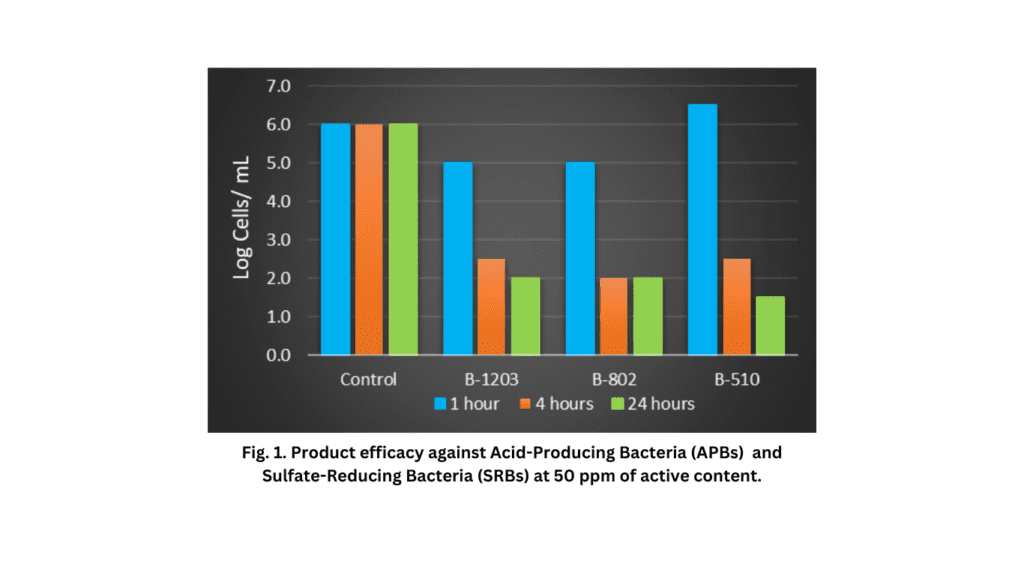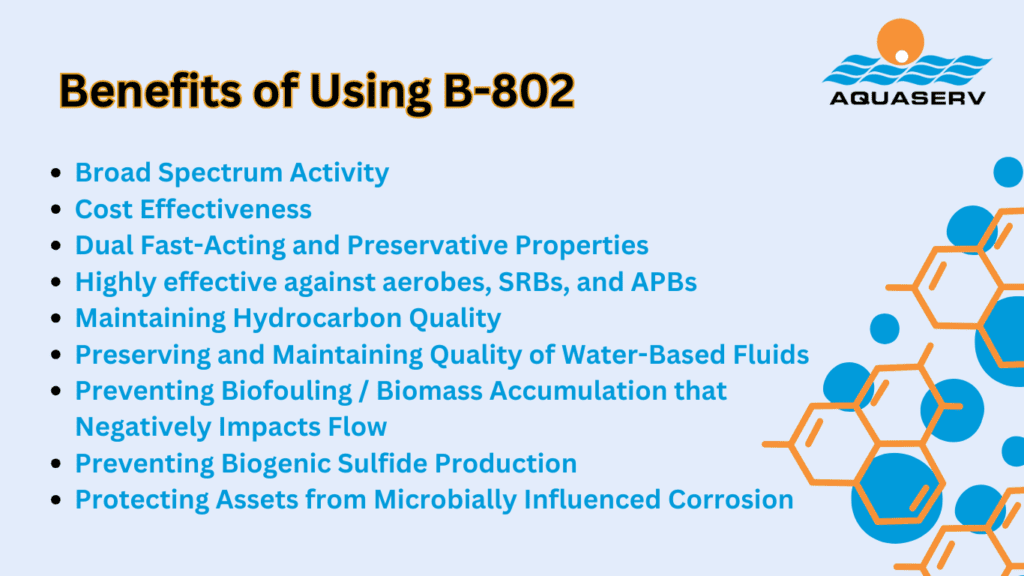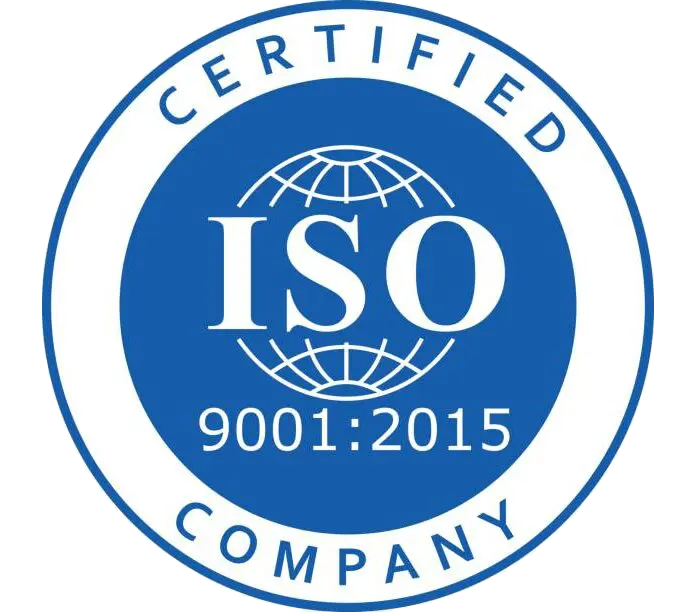Product Information: B-802
Product Description
B-802 is an EPA registered blend of 8.0% glutaraldehyde, 1.2% didecyl dimethyl ammonium chloride (DDAC), and 0.8% alkyl dimethyl benzyl ammonium chloride (ADBAC) in water. The product was specifically designed to be cost effective in controlling acid-producing bacteria (APB) and sulfate-reducing bacteria (SRB) that contribute to souring, the production of sulfide, and microbially influenced corrosion in cooling water systems, oil and gas production, and transmission pipelines and systems.
The combination of glutaraldehyde and quaternary ammonium chlorides (QUATs) has been shown to be more effective in controlling bacteria (i.e. aerobes, SRBs and APBs) than the individual active ingredients alone. In addition, the blend of QUATs in B-802 has also been shown to exhibit superior performance than the individual components (i.e. single chain QUATs) with regards to efficacy and tolerances to anionic surfactants, high soil loads, and hard water. These synergistic effects allow for lower biocide concentrations to be use in comparison to single active or glutaraldehyde, single chain QUAT based products.
In oil and gas operations where microbial control is needed, especially with SRBs, the use of B-802 allows for an overall reduction in biocide use, reduction in the environmental impact while achieving increased production throughput with overall biocide use cost reduction.
Product Performance
The effectiveness of B-802 against aerobes / APBs (E. coli, Klebsiella sp., Enterobacter sp.) and SRBs (Desulfovibrio gabonensis, Desulfovibrio alaskensis) was examined in produced water at concentrations from 0 – 200 ppm on a total actives basis along with B-1203, a blend of 12.5% glutaraldehyde, 1.8% DDAC, and 1.2% ADBAC, and B-510, a blend of 5% glutaraldehyde and 10% ADBAC.
Sterilized produced water was inoculated with 1 X 106 cfu/ml with aerobes/APBs and/or SRBs. The aerobes/APBs containing water samples were exposed to the biocidal products for periods of 1, 4, and 24 hours at which point the test samples were enumerated. The SRB containing water samples were exposed to the biocidal products for periods of 1 and 3 hours at which point the test samples were enumerated. The following figures illustrate the effectiveness of biocidal products to control/reduce the level of APBs and SRBs (Fig. 1) in the produced water that contribute to souring, the production of sulfide, and abiotic corrosion.

The minimum treatment concentration for these biocidal products in oil and gas operations is 50 ppm on a total actives basis. At 50 ppm of active, B-1203, B-802, and B-510 are effective in controlling aerobes/APBs and SRBs in produced water. In fact, B-1203 and B-802 should exhibit comparable performance, since the treatment dosage is the same (40 ppm of glutaraldehyde and 10 ppm of quat: 4 to 1 ratio.) However, on a cost per pound basis, B-510 is at least 10% more expensive than B-802, given the lower active biocide content (10% vs. 15%) within the products and the cost of individual components.

Applications in Oil & Gas and Water Treatment
EPA approved label uses:
Oil & Gas Applications:
- Drilling Muds, Completion and Workover Fluids Systems
- Frac Fluids
- Gas Storage Wells and Systems
- Hydrotesting
- Injection Waste Fluids
- Oilfield & Gas Production, Transmission Pipeline and Systems
- Oilfield Water Flood Systems, Enhanced Oil Recovery, and Fracturing/Stimulation Fluids
- Packer Fluids
- Pipeline Pigging and Scraping Operations
Water Treatment Applications:
- Air Washers
- Cooling Towers
- Dairy Sweetwater Systems
- Evaporative Condensers
- Heat Exchange / Transfer Systems
- Hydrostatic Sterilizers
- Industrial and/or Recirculating Cooling Water Towers
- Pasteurizers
The information given is drawn from data generated internally, but in all cases, the user should check and confirm the results in their own use application before proceeding further since results can vary due to difference in production water makeup from site to site.
For further information, please contact your Aquaserv sales representative.

